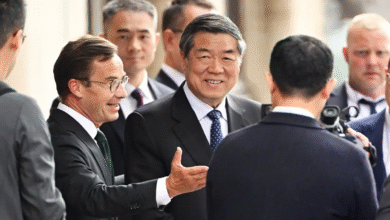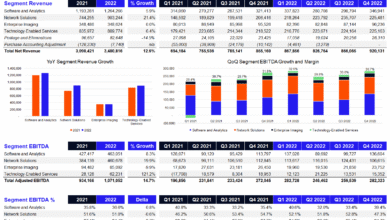Alexandr Wang Departure Marks New Era at Scale AI and Meta

The recent news surrounding Alexandr Wang’s departure from Scale AI marks a significant shift in the dynamics of the artificial intelligence landscape. As part of a groundbreaking deal, Meta is investing a staggering $14.3 billion into Scale AI, a move that has attracted much attention as it highlights the increasing importance of AI initiatives in today’s tech environment. Wang, who founded Scale AI and has been its driving force as CEO, will transition to Meta where he is expected to enhance the company’s artificial intelligence capabilities. While Jason Droege steps up as the new CEO of Scale AI, Wang will continue to support the company’s mission as a director. This transition not only signals a CEO transition but also reflects the ongoing evolution within the AI startup sector fueled by massive investments like Meta’s.
The announcement regarding Alexandr Wang’s exit from Scale AI comes on the heels of a considerable financial commitment from Meta, indicating a strategic pivot in the AI domain. As Wang assumes a pivotal role at Meta, the implications of this leadership change could reshape the future of AI initiatives on a grand scale, drawing in significant interest from the tech community. The substantial investment made by Meta showcases a competitive edge in enhancing their capabilities in the field of artificial intelligence. This collaboration, which includes a notable acquisition of a stake in Scale AI, is poised to blend innovative approaches from both entities. With Jason Droege stepping into the CEO position at Scale AI, this shift emphasizes the ongoing evolution and transition within the AI startup ecosystem.
CEO Transition: Alexandr Wang’s Departure
The announcement of Alexandr Wang’s departure as CEO of Scale AI marks a pivotal moment in the company’s journey. Wang’s leadership has shaped Scale AI into a major player in the artificial intelligence landscape, and his decision to join Meta, amidst a substantial $14.3 billion investment, indicates a strategic shift not only for him but for Scale AI as a whole. As he transitions into a director role at Scale AI, his ongoing commitment to the startup’s vision is central to ensuring a smooth handover to newly appointed CEO Jason Droege.
This transition is not just about Wang leaving; it’s about the future direction of Scale AI under Droege’s leadership. Droege, with his background at Benchmark and Uber, aims to leverage his experience to drive the company’s strategic initiatives forward. Given the ongoing developments in AI, the emphasis on a robust leadership transition is critical to maintaining Scale AI’s commitment to innovation, especially with competing giants like Google and Microsoft watching closely.
Meta’s Strategic Investment: Boosting AI Initiatives
Meta’s $14.3 billion investment in Scale AI serves as a cornerstone for the company’s strategy to enhance its artificial intelligence capabilities. With the technology landscape becoming increasingly competitive, particularly against innovators such as OpenAI and Alphabet, this partnership is a calculated move to solidify Meta’s position in the AI domain. Wang’s expertise will be instrumental as he integrates into Meta, specifically focusing on superintelligence advancements that are pivotal for both corporations.
This investment does more than just highlight Meta’s financial intentions; it reflects a broader commitment to harness the talents of leading innovators in the field. With Wang on board, Meta aims to ramp up its AI initiatives, ensuring that the quality of its AI models meets the demands of an increasingly sophisticated market. As Meta navigates these changes, the strategic synergy with Scale AI is expected to yield innovative solutions that enhance data quality for AI models.
Implications for Scale AI’s Future
While Alexandr Wang’s departure signifies change, it does not spell uncertainty for Scale AI’s future. With Jason Droege stepping into the CEO role, the focus will remain on the company’s long-term goals and commitment to its mission. Scale AI has established a multifaceted relationship with major tech players, and maintaining its diverse clientele—including competitors like Google and Microsoft—will be paramount. The assurances from Scale AI’s spokesperson about protecting client data will help reassure stakeholders as this transition unfolds.
Furthermore, as a major customer of Scale AI, Meta’s investment should theoretically bolster Scale’s capabilities rather than hinder them. This collaboration can drive improvements in the technology and performance that Scale AI offers to its clients. By aligning closely with Meta’s ambitions in AI, Scale can tailor its developments to meet evolving industry standards and client expectations, ultimately positioning itself as a vital contributor to the future of AI.
Navigating Competitive Pressures in AI
The AI industry is characterized by rapid advancements and intense competition, and Scale AI is not exempt from these pressures. With giants like OpenAI and Alphabet investing heavily in research and development, Scale AI must strategically navigate the evolving landscape while adhering to its foundational principles. Alexandr Wang’s move to Meta indicates not just an individual career decision, but a recognition of the competitive demands facing all players in the AI domain.
As the new CEO, Jason Droege’s role in addressing these competitive pressures will be crucial. He will need to focus on leveraging partnerships, enhancing product offerings, and ensuring that Scale AI remains relevant in a crowded marketplace. The ongoing relationship with Meta can provide a competitive edge, equipping Droege with resources and strategic insights crucial for steering Scale AI towards sustained growth and innovation.
The AI Landscape: Future Prospects and Challenges
The departure of Alexandr Wang comes at a time when the AI landscape is rapidly evolving, presenting both tremendous opportunities and significant challenges. With Meta’s financial backing, Scale AI is poised to explore new frontiers in artificial intelligence, but the company must remain vigilant against the backdrop of fierce competition. The intent behind Meta’s investment is to leverage Scale’s capabilities to enhance its AI models, positioning both entities for success in a marketplace that rewards innovation and quality.
However, such collaboration also raises questions about the balance of power in AI. As Scale AI continues to support various industry players while aligning its vision with that of Meta, the challenge will be to maintain its independence and integrity. Successfully navigating these prospects will require not only strategic foresight from Droege and his team but also a commitment to ethical standards in AI development—a balance that is crucial in maintaining trust with existing clients and stakeholders.
Alexandr Wang’s Legacy at Scale AI
As Alexandr Wang transitions to his new role at Meta, his legacy at Scale AI will undoubtedly endure. Under his stewardship, Scale AI has achieved remarkable milestones, transforming from a fledgling startup into a formidable force in the AI sector. His innovative drive and commitment to excellence have laid the groundwork for the company’s continued ascent in a highly competitive environment. The structure and culture he cultivated will likely influence Droege’s leadership and the overall trajectory of Scale AI.
Moreover, Wang’s decision to stay involved as a director emphasizes his unwavering support for the mission and vision of Scale AI. This involvement will be crucial as the company adapts to new challenges and seizes arising opportunities. His influence will remain felt within the company, serving as a guiding light as Scale AI navigates its future endeavors within the AI sphere.
The Role of Leadership in AI Innovation
Leadership plays a critical role in the innovation landscape, particularly in the fast-paced world of artificial intelligence. Alexandr Wang’s leadership at Scale AI epitomized a commitment to pushing the boundaries of what’s possible in AI technology. His strategic vision fueled significant advancements and positioned Scale AI at the forefront of industry developments. With Jason Droege now taking the helm, his approach to leadership will be pivotal as Scale AI continues to innovate and expand its offerings.
Droege’s previous experience in high-stakes environments, combined with the backing of Meta, provides an intriguing opportunity for transformative leadership. The expectation is that he will harness the collaborative spirit of both organizations to foster a culture of innovation that not only enhances their AI initiatives but also sets a benchmark within the industry. This emphasis on leadership continuity is essential for ensuring that Scale AI remains agile, competitive, and capable of meeting the evolving demands of its diverse clientele.
Meta’s Vision for Future AI Development
Meta’s ambitious investment in Scale AI is indicative of a larger vision for the future of AI development. By integrating Alexandr Wang into its ecosystem, Meta is signaling its intent to prioritize innovation through collaboration, with a focus on developing advanced AI technologies. This strategy aligns with CEO Mark Zuckerberg’s goal to elevate AI as a primary focus across Meta’s platforms, aiming to enhance user experience and operational efficiencies.
As Meta navigates its role in transforming AI technologies, the partnership with Scale AI could pave the way for groundbreaking advancements. By combining resources and expertise, both entities stand to benefit from enhanced capabilities that could redefine interactions with artificial intelligence. This vision for the future of AI emphasizes the significance of strategic partnerships in driving technological progress and meeting the complex demands of an ever-evolving digital landscape.
Understanding Artificial Intelligence Startups and Their Impact
The rise of artificial intelligence startups like Scale AI represents a significant shift in how technology is developed and utilized across industries. These startups are at the forefront of pioneering solutions that address complex data challenges and harness the potential of AI. With Meta’s significant investment, the spotlight on Scale AI highlights the critical role that such startups play in shaping the future of AI, offering innovative products and services that are crucial for meeting the demands of a rapidly changing technological environment.
The impact of AI startups is felt not just in the technology sector, but across all industries seeking to leverage AI for improved efficiency and decision-making. As these companies continue to innovate, key partnerships with larger organizations like Meta enhance their capacity to scale operations and push the boundaries of AI applications. The collaboration between established firms and emerging startups will be essential in navigating the challenges and opportunities inherent in the development of cutting-edge AI technologies.
Frequently Asked Questions
What does Alexandr Wang’s departure mean for Scale AI?
Alexandr Wang’s departure signifies a major transition for Scale AI as he moves to Meta as part of a $14.3 billion investment deal. While he will not be serving as CEO anymore, he will continue to support Scale AI’s mission as a board member, ensuring his ongoing influence and connection with the startup’s strategic vision.
How will Alexandr Wang’s transition to Meta impact AI initiatives?
Wang’s transition to Meta is aimed at bolstering the company’s artificial intelligence initiatives. His expertise will be pivotal in driving Meta’s superintelligence strategy, particularly as they compete in the AI landscape with companies like OpenAI and Alphabet.
Who is replacing Alexandr Wang as CEO of Scale AI?
Jason Droege, the chief strategy officer at Scale AI, is set to take over as CEO following Alexandr Wang’s departure. Droege’s background in strategy and experience at companies like Uber positions him well to lead Scale AI into its next chapter.
What are the implications of Meta’s investment in Scale AI?
Meta’s investment of $14.3 billion in Scale AI signifies a strategic partnership aimed at enhancing AI model development. This investment will provide Scale AI with additional resources to expand its capabilities while solidifying Meta’s commitment to advancing artificial intelligence initiatives.
Will Scale AI’s operations change with Alexandr Wang’s departure?
While Alexandr Wang’s departure marks a leadership change, Scale AI’s operations are expected to remain stable. The company reassured clients that it will continue its services without disruption and that Meta will not have access to any confidential business information.
How does the departure of Alexandr Wang affect Scale AI’s relationship with clients?
Despite Alexandr Wang’s departure to Meta, Scale AI maintains its existing relationships with clients, including major tech companies like Google and Microsoft. The firm has assured that the investment and new leadership will not alter its client servicing or data privacy commitments.
Why did Alexandr Wang decide to join Meta?
Alexandr Wang’s decision to join Meta likely stems from the opportunity to lead transformative AI initiatives under a significant investment that Meta is making in Scale AI. This position allows him to apply his expertise on a larger platform, furthering the development of advanced AI technologies.
What does this mean for the future of Scale AI’s AI projects?
With Jason Droege stepping in as CEO and Alexandr Wang’s involvement in strategizing Meta’s AI agenda, Scale AI is positioned for continued innovation in artificial intelligence projects. The company is expected to leverage Meta’s investment to enhance its technology and project capabilities.
| Key Points | Details |
|---|---|
| Alexandr Wang’s Departure | Wang is leaving Scale AI to join Meta as part of a $14.3 billion investment deal. |
| CEO Transition | Jason Droege, the chief strategy officer, will take over as the new CEO of Scale AI. |
| Investment Details | Meta will acquire a 49% stake in Scale AI without voting rights. |
| Wang’s New Role | Wang will remain a director at Scale AI and assist Meta with AI initiatives. |
| Impact on Scale AI’s Clients | Meta’s investment will not affect Scale AI’s existing client relationships, including competitors like Google and Microsoft. |
Summary
The news of Alexandr Wang’s departure marks a significant pivot for Scale AI as he transitions to Meta following a landmark $14.3 billion investment. This decision not only signifies Meta’s commitment to enhancing its artificial intelligence capabilities but also paves the way for new leadership under Jason Droege. As Wang takes on a new role while supporting Scale AI’s mission, the landscape of AI development is set for exciting changes, solidifying the collaborative efforts between Scale AI and Meta.




